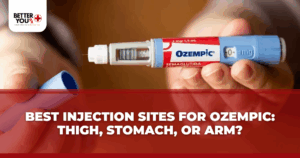Diabetes affects over 34 million people in the United States, representing a significant public health challenge. Managing diabetes effectively requires consistent access to a variety of medications, including insulin and newer therapies like GLP-1 agonists. However, rising medication costs pose significant barriers, limiting access and negatively impacting health outcomes. This article explores the current landscape of diabetes medications, the challenges related to affordability, and the consequences for patient care, while also highlighting the resources available through Better You Rx.
The Landscape of Diabetes Medications
Understanding the types of diabetes medications available is crucial for effective management. Medications are typically categorized based on their mechanism of action and the specific needs of patients.
Insulin: Insulin therapy is critical for individuals with type 1 diabetes and may also be necessary for those with type 2 diabetes who struggle to achieve glycemic control with oral medications. Insulin is available in various forms, including:
Rapid-acting Insulin: Starts working within minutes and is typically used to control blood sugar spikes after meals.
Long-acting Insulin: Provides a steady release of insulin over an extended period, helping to manage blood sugar levels throughout the day and night.
Intermediate-acting Insulin: Offers a balance between rapid and long-acting types, often used to cover the gaps between meals.
GLP-1 Agonists: Medications like Rybelsus and Ozempic fall into this category. They mimic the effects of the naturally occurring hormone GLP-1, which stimulates insulin secretion in response to meals, inhibits glucagon release, and slows gastric emptying. These medications not only help lower blood sugar levels but also promote weight loss, which is particularly beneficial for many patients with type 2 diabetes. Better You Rx provides these innovative medications, helping patients manage their diabetes effectively while addressing weight-related issues.
Other Oral Medications: Several classes of oral medications are available for diabetes management:
Metformin: The first-line treatment for type 2 diabetes, metformin helps improve insulin sensitivity and reduce liver glucose production.
Sulfonylureas: These medications increase insulin secretion from the pancreas but may lead to hypoglycemia if not managed carefully.
DPP-4 Inhibitors: These drugs work by enhancing the body’s own incretin hormones, which help regulate blood sugar levels post-meal.
Challenges in Accessing Affordable Diabetes Medications

High Costs
The financial burden of diabetes medications has escalated dramatically over the past decade. Key factors include:
- Pricing Strategies of Pharmaceutical Companies: Drug manufacturers often set high launch prices for new medications, influenced by research and development costs, marketing expenses, and the desire to achieve substantial profit margins. For example, some newer insulins can cost upwards of $300 per vial, making them unaffordable for many patients.
- Market Dynamics and Competition: The diabetes medication market is primarily controlled by a few major pharmaceutical companies. This limited competition creates an environment where these companies can increase prices without facing significant market pressure. The resulting monopolistic practices can prevent patients from accessing essential medications at fair prices.
- Insurance Coverage: Health insurance significantly impacts the affordability of diabetes medications. However, the variability in coverage can create challenges for patients:
- High Deductibles and Copayments: Even when medications are covered, high out-of-pocket costs can remain a barrier. Patients may face deductibles of thousands of dollars, requiring them to pay substantial amounts before insurance coverage kicks in.
- Formulary Restrictions: Insurance plans often limit coverage to specific brands or formulations of medications. Patients might find that their preferred medications are not included in their plan’s formulary, leading to difficulties in accessing the treatments that work best for them.
- Out-of-Pocket Expenses
For many diabetes patients, the high cost of medications results in significant out-of-pocket expenses: - Medication Non-Adherence: Faced with high prices, patients may skip doses, reduce their medication intake, or even avoid filling prescriptions altogether. This can lead to poor blood sugar control and severe health consequences, including hospitalizations.
- Financial Strain on Families: The financial burden of diabetes management can strain household budgets, forcing patients to make tough choices between purchasing medications and meeting other essential living expenses such as housing and food.
- Lack of Generic Options
While generic medications provide significant savings for many health conditions, options for diabetes medications remain limited: - Limited Generic Availability: Many diabetes medications, particularly newer formulations, do not have generic alternatives. This lack of affordable options keeps patients tied to expensive brand-name drugs, further complicating access to necessary treatments.
- Impact on Health Equity: The limited availability of generics disproportionately affects low-income individuals and those in marginalized communities, exacerbating existing health disparities. Patients in these groups often have lower access to healthcare resources and education, making it more difficult to manage their diabetes effectively.
Impact on Diabetes Management

Health Implications
The inability to afford diabetes medications leads to severe health risks:
Diabetic Ketoacidosis (DKA): This condition occurs when the body doesn’t have enough insulin, leading to dangerously high blood sugar levels and potentially life-threatening complications. DKA often necessitates emergency medical treatment and hospitalization.
Long-Term Complications: Inadequate blood sugar control can accelerate the development of serious complications such as cardiovascular disease, neuropathy, kidney failure, and vision problems. These complications not only diminish patients’ quality of life but also lead to increased healthcare costs and further strain on the healthcare system.
Psychological and Emotional Burden
Managing diabetes alongside financial constraints can lead to significant psychological challenges:
Increased Anxiety and Depression: The stress of worrying about medication costs can contribute to feelings of anxiety and depression. Patients may feel overwhelmed by their health condition and financial situation, negatively affecting their overall well-being.
Social Isolation: Financial difficulties can prevent patients from participating in social activities or seeking support from friends and family. This isolation can exacerbate feelings of loneliness, making diabetes management even more challenging.
Impact on Daily Life
The high cost of diabetes medications affects everyday living in profound ways:
Lifestyle Adjustments: Patients may be forced to choose between purchasing medications and covering essential expenses like groceries or utilities. This can lead to further stress and impact overall mental and emotional health.
Healthcare Disparities: Individuals in lower socioeconomic brackets face even greater challenges. Limited access to necessary resources, healthcare, and support systems can create a cycle of poor health outcomes that is difficult to break.
Policy Responses and Advocacy Efforts

In response to the challenges surrounding diabetes medication affordability, various legislative measures and advocacy efforts are underway. These initiatives aim to address the pressing issues of high drug prices and limited access to essential treatments.
Legislative Initiatives
Lawmakers across the United States have recognized the urgent need to address the skyrocketing costs of diabetes medications, particularly insulin. Several states have taken the lead in introducing and passing legislation aimed at improving access and affordability for patients:
Price Cap Legislation: In states like Colorado, lawmakers have implemented measures that cap out-of-pocket costs for insulin at a maximum of $100 per month for insured patients. This legislation aims to alleviate the financial burden on patients who rely on insulin to manage their diabetes effectively.
Transparency Bills: Some states are enacting laws that require pharmaceutical companies to disclose the pricing structure of their medications. By mandating transparency, these laws aim to shed light on the factors contributing to high drug prices, helping patients and policymakers understand the cost dynamics.
Access Improvement Measures: In California, legislation has been introduced to mandate that pharmacies provide at least one generic version of insulin on their formulary. This initiative seeks to promote competition and lower costs, ensuring that patients have access to more affordable alternatives.
Insurance Coverage Reforms: Many states are advocating for reforms that require insurance companies to cover the full range of diabetes medications and supplies without imposing excessive cost-sharing measures. This includes provisions to eliminate prior authorization requirements for insulin prescriptions, streamlining access for patients.
These legislative initiatives reflect a growing recognition of the importance of affordable healthcare and the urgent need to support individuals living with diabetes.
Advocacy Organizations

Numerous advocacy organizations play a critical role in raising awareness about the diabetes medication affordability crisis and advocating for systemic changes:
American Diabetes Association (ADA): The ADA is at the forefront of advocating for policies that enhance diabetes care and access to medications. The organization actively lobbies for legislative changes at both state and federal levels, pushing for reforms that address the high costs of insulin and other diabetes medications. Additionally, the ADA provides resources for patients to understand their rights and options in navigating the healthcare system.
Diabetes Advocacy Alliance (DAA): The DAA is a coalition of organizations and stakeholders dedicated to improving diabetes care and outcomes. The alliance focuses on policy advocacy, working to raise awareness of the barriers patients face in accessing affordable medications. Through collective efforts, the DAA aims to influence legislative changes that prioritize patient needs and reduce the financial burden of diabetes management.
Local and Regional Advocacy Groups: In addition to national organizations, various local and regional advocacy groups are dedicated to addressing diabetes-related issues. These groups often provide grassroots support, organizing campaigns to raise awareness within their communities. They may also offer direct assistance to patients seeking help with medication costs, connecting them with financial assistance programs and resources.
Public Awareness Campaigns: Advocacy organizations frequently launch public awareness campaigns to educate patients and the general public about the importance of affordable diabetes medications. These campaigns aim to mobilize community support for policy changes and empower patients to advocate for their needs.
Together, these advocacy efforts are vital in creating a unified voice for individuals affected by diabetes, driving systemic changes to improve medication access and affordability. As public awareness of these issues continues to grow, the hope is that more comprehensive solutions will emerge, ensuring that all patients have access to the medications they need to manage their health effectively.
Personal Strategies for Managing Costs
Patients can explore several strategies to manage the high costs of diabetes medications effectively:
Review Insurance Plans: Understanding the specifics of insurance coverage can help patients identify the best options for their needs. Patients should compare plans, focusing on those with lower out-of-pocket expenses for diabetes medications.
Seek Generic Alternatives: When available, generic medications can provide significant cost savings. Discussing options with healthcare providers can help identify suitable alternatives that maintain treatment efficacy.
Utilize Patient Assistance Programs: Many pharmaceutical companies offer assistance programs designed to help individuals access medications at reduced or no cost. These programs can be invaluable for those who qualify and need support.
Engage with Community Resources: Local organizations, health clinics, and support groups can provide valuable information about financial assistance and resources that can help patients manage their diabetes effectively.
Conclusion
The challenges associated with accessing affordable diabetes medications in the U.S. are complex and multifaceted. Rising costs, variability in insurance coverage, and limited generic options create barriers that hinder effective diabetes management for millions of Americans. It’s important to note that while Better You Rx provides affordable options for prescription medications, it does not accept insurance. As a pharmacy affiliate, Better You Rx offers discounted prices on medications that may help in managing diabetes, but these transactions are handled out-of-pocket. Beneficiaries looking for savings on prescriptions can benefit from the lower prices provided by Better You Rx, even though insurance coverage cannot be applied.
As we work toward advocacy for improved policies and resources, patients need to remain informed about their options. Better You Rx offers a variety of affordable prescription medications for diabetes management, including effective options like Rybelsus and Ozempic. These medications help ensure that patients can prioritize their health without the added burden of exorbitant costs. Together, we can strive for better access and outcomes for those living with diabetes, fostering a healthier future for all.



